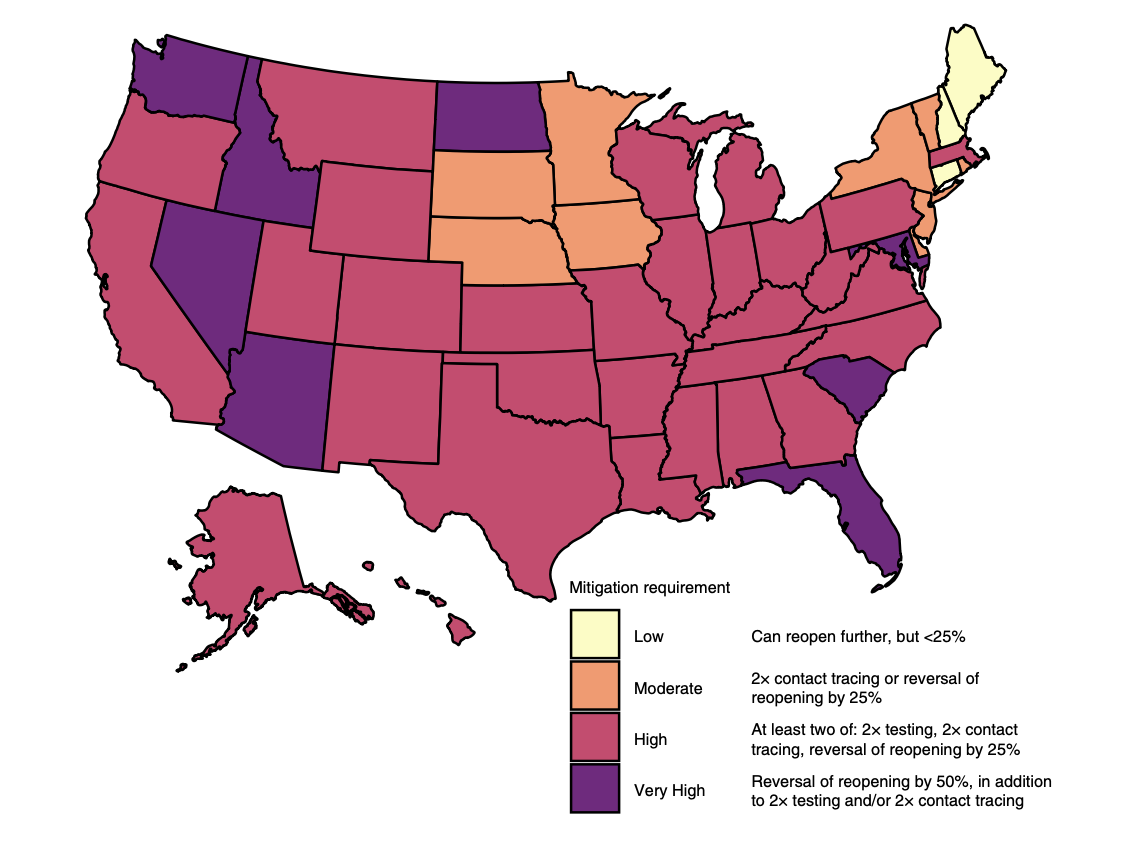CVMBS Researchers Develop State-Level COVID-19 Response Model
Story by Margaret Preigh, CVMBS Communications
A team of researchers at the Texas A&M College of Veterinary Medicine & Biomedical Sciences (CVMBS) and the Texas A&M School of Public Health (SPH) has developed a model that predicts at a state-level the non-pharmaceutical intervention needs of states to mitigate risk and contain COVID-19 as they reopen.

This transmission dynamic model—which evaluates the impact of contact tracing, testing, and social distancing as tools in reducing COVID-19 spread—relies on past data of states’ COVID-19 cases and deaths to sort states into risk categories. The model then proposes the appropriate degree of intervention required for states to safely reopen or reduce their current spread of COVID-19.
Such a tool could be used by state public health departments to inform the degree of contact tracing, testing, and social distancing that should be pursued to both contain the outbreak and to inform what mitigation efforts should be taken when relaxing restrictions and reopening to compensate for increased risk of spread.
“We are trying to understand these three factors first and how each state was doing in July and, then, looking forward, how much would they need to improve upon each of those factors in order to mitigate the transmission to get what they call the R-naught below one,” said Weihsueh Chiu, a study author and professor in the CVMBS Department of Veterinary Integrated Biosciences (VIBS).
The R-naught is a measure of the average number of people that a single infected individual will transmit the disease to. If the R-naught is below one, that means that the infection is spreading slowly and will eventually die out.
This study, published in Nature Human Behavior, found that as of the end of July, only three states (Connecticut, Maine, and New Hampshire) were on track to curtail their epidemic curve.
Eight states (Arizona, Florida, Idaho, Maryland, North Dakota, Nevada, South Carolina, and Washington) required a 50% reversal of reopening and increased contact tracing and testing to reduce and maintain transmission rates below the “very high” category. The remaining 39 states and the District of Columbia had to double their testing and/or contact tracing rates and/or roll back re-opening by 25% to stay on track.
The researchers have made this tool publicly available online so local and state officials can make data-driven policy decisions on how to compensate for increased re-opening measures by increasing other forms of mitigation. They present their results in an “and/or” format that would allow states to pick and choose the re-opening plan that would work best for their region.
“Probably fewer states than we expect have their own modeling team. If you’re a public health department, even the state health department, you don’t necessarily have a modeler on-hand on your staff,” said Rebecca Fischer, a study author and SPH assistant professor of epidemiology and biostatistics. “A lot of health departments are looking for this kind of help that they don’t have on-hand. These techniques are really applicable to those departments and making them accessible and available is important.”
Until a vaccine is approved, managing the spread of COVID-19 will be instrumental in keeping communities safe. The results of this study inform on how we can define our new normal and resume daily life until a vaccine is available.
“Increasing these efforts is very much paramount in helping to mitigate the situation, because non-pharmaceutical interventions are basically just tools that help us to curtail the spread until we have a pharmaceutical that can be widely distributed, which you hopefully use to get rid of the problem once and for all,” said Martial Ndeffo, a study author and assistant professor in the CVMBS VIBS department. “We want to bring this pandemic to the point where we can resume a normal life without worrying too much about the situation.”
Defining these parameters for re-opening is the first step in creating safer, more open communities in the midst of this pandemic.
Cooperation at an individual level is imperative for the success of these mitigation efforts: this study demonstrates the impact that each of us can have in curbing the spread of COVID-19 when we all do our part, according to the researchers.
“Participating in getting tested, contact tracing, and social distancing is not just to protect yourself; it’s about protecting the community around you,” Chiu said. “If we all did our part, we would all be safer collectively. This disease doesn’t discriminate; it can be transferred. It doesn’t care who you are when it finds you. So, we’re all in this together; by being safer as individuals, it makes us all safer in a sort of multiplicative way.”
###
For more information about the Texas A&M College of Veterinary Medicine & Biomedical Sciences, please visit our website at vetmed.tamu.edu or join us on Facebook, Instagram, and Twitter.
Contact Information: Jennifer Gauntt, Director of CVMBS Communications, Texas A&M College of Veterinary Medicine & Biomedical Sciences; jgauntt@cvm.tamu.edu; 979-862-4216


